The Rhode Island Red chicken (RIR) is one of the most popular chicken breeds worldwide. Known for their excellent egg production, hardy nature, and flavorful meat, they are a true dual-purpose chicken.
This guide will help you understand everything about Rhode Island Red chickens — from their history, lifespan, and egg production to their temperament, color varieties, size, and care tips — so you can confidently raise them in your backyard.
Rhode Island Reds (RIRs) are friendly and adaptable chickens that thrive in a wide range of climates. They’re especially valued for producing large numbers of light-brown Rhode Island Red chicken eggs while also providing high-quality meat, making them one of the best choices for both beginners and experienced poultry keepers.
RIRs are particularly cold-hardy but can also adapt to warm climates, which is one of the key characteristics of Rhode Island Red chickens. If you’ve wondered “are Rhode Island Red chickens friendly?” — the answer is yes, especially the hens, which are calm and easy to handle.
History of Rhode Island Red (RIR) chickens
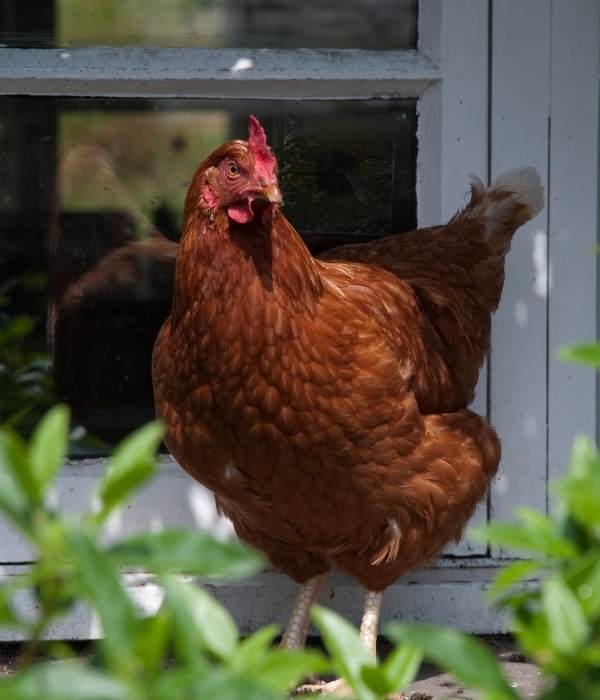
The Rhode Island Red chicken originated in the mid-1800s in Rhode Island and Massachusetts. In 1854, a sea captain named William Tripp began crossing popular breeds such as Cochin, Java, Malay, and Shanghai with Italian Brown Leghorn chickens.
Through careful selection, they developed the hardy and productive Rhode Island Red, a breed prized for both eggs and meat. This crossbreeding laid the foundation for the remarkable Rhode Island Red chicken egg production that we see today.
The first monument honoring the Rhode Island Red chicken was raised in 1925. The breed’s popularity surged in 1954 when the State of Rhode Island celebrated its 100th anniversary as a recognized breed and later named it the state bird.
Another monument stands in Adamsville, Little Compton, Rhode Island, placed by the Rhode Island Red Club of America. These monuments mark the breed’s heritage as one of the most iconic and productive chickens in America.
Color Varieties of Rhode Island Reds
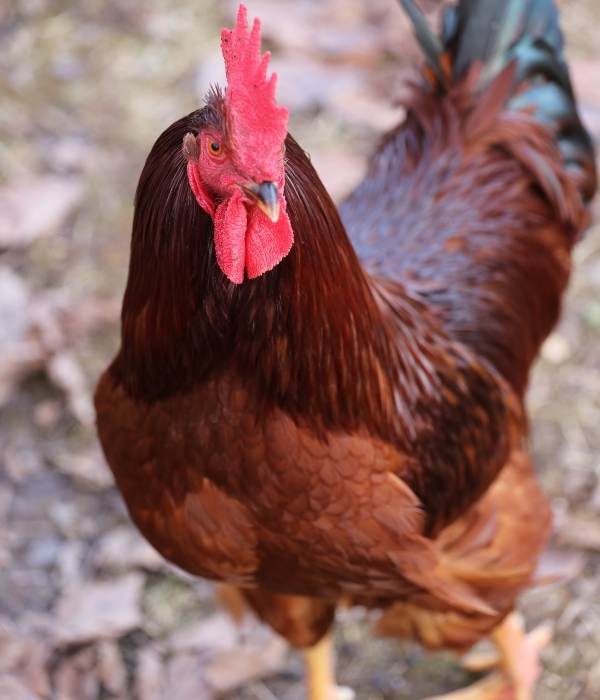
The name of the Rhode Island Red chicken comes from its striking feather color. RIRs are available in shades from light rust to deep maroon with black accents. This distinctive coloring is one of the most recognizable characteristics of Rhode Island Red chickens.
The American Poultry Association accepts both bantam and large-fowl Rhode Island Reds. Within the breed, varieties are also divided by comb type, single comb and rose comb which are both accepted.
While the feathering is mostly reddish brown, the tail feathers are often black, and baby chicks hatch with a lighter tan to reddish color. If you’ve ever wondered about Rhode Island Red chicken egg color, the hens lay attractive light-brown eggs that are easy to spot in the nest box.
Lifespan of RIRs
The typical Rhode Island Red chicken lifespan is about 5–8 years. This is slightly shorter than some heritage breeds like Silkies or Orpingtons because of the breed’s high egg-laying output.
With proper care, good nutrition, and predator protection, many backyard keepers find their Rhode Island Red chickens stay productive and healthy for several years.
This hardiness, along with their adaptability to different climates, remains one of the defining characteristics of Rhode Island Red chickens.
Egg Production
One of the biggest draws of the Rhode Island Red chicken is its outstanding egg production. A healthy hen typically lays around 180–250 light-brown eggs per year, about 4–6 large eggs per week. Heritage strains may produce slightly fewer, around 150–200 eggs annually, but still deliver excellent consistency.
Because of this reliable Rhode Island Red chicken egg production, the breed is often recommended for new chicken keepers and small farms. Genetics, diet, and housing can influence the exact number of eggs, but overall the Rhode Island Red remains one of the most productive dual-purpose chickens you can raise.
Also read: List of Chickens That Lay Colored Eggs
The Temperament of Rhode Island Red Chickens
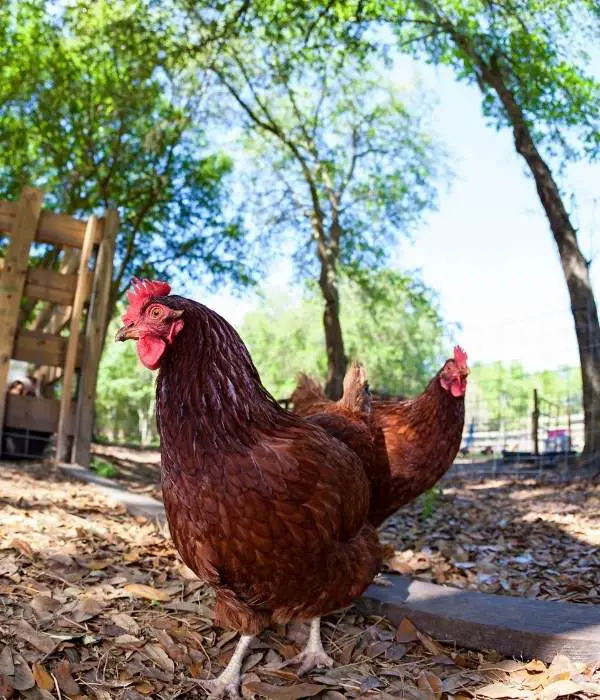
Rhode Island Red chickens are generally friendly, docile, and calm — especially the hens. This makes them ideal for first-time chicken keepers who wonder “are Rhode Island Red chickens friendly?” The answer is yes: they’re easy to handle, social, and adapt well to confinement or free-ranging.
RIR roosters can occasionally show a little more assertiveness, but most are still manageable if raised with gentle handling. Both hens and roosters are talkative and active, and when given space, they happily forage for bugs and seeds, keeping your yard free of pests. Free-ranging also keeps them healthier than constantly staying in coops.
Color, Size, Appearance, Characteristics of Rhode Island Red Chickens
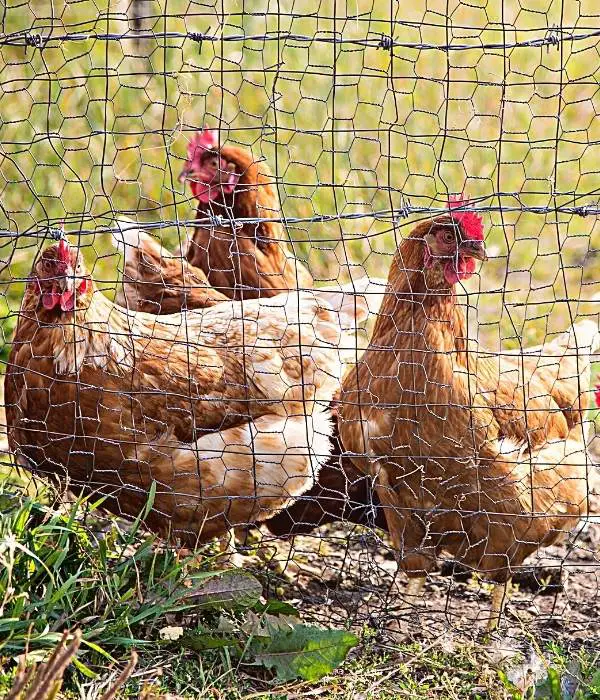
Color: Rhode Island Red chickens have a rich rusty-brown body color with black tail feathers, giving them a stately, almost king-like appearance. In some strains, you may also see black to brownish-red feathers scattered through the plumage. RIR baby chicks are light brownish-red to tan.
Size: According to the APA standard, large-size Rhode Island Red roosters weigh around 8.5 lbs and hens about 6.5 lbs. Bantam varieties are smaller but maintain the same rugged appearance. This answers the frequent question “how big do Rhode Island Red chickens get?” — they’re one of the heavier dual-purpose breeds.
Appearance: The hen and rooster have a sturdy, U-shaped body structure with a tail bent upward at about a 45° angle. The earlobes and wattles are vivid red, and you can find Rhode Island Red chickens in both single- and rose-comb types. The comb is bright red with 7–9 pointed spikes. Their skin and legs are yellow, with four clean toes on each foot.
Characteristics
Rhode Island Red chickens are known for their hardiness and adaptability. They tolerate cold winters well but can also thrive in warm to hot climates. Hens are typically calm and docile, while roosters may be protective of their flock — a trait that can help deter predators.
Another key characteristic of Rhode Island Red chickens is their low broodiness. Most hens rarely go broody, which makes egg collection simple. If you want chicks, you can use an incubator or rely on the occasional hen that does sit on eggs, as broody RIR hens usually make good mothers.
Their active foraging nature, resilience, and strong immune system make them one of the easiest and most rewarding chicken breeds to raise.
Rhode Island Red Rooster Vs. Hen
The Rhode Island Red rooster has a reputation for being more assertive than the hen, which sometimes makes new keepers think all roosters are aggressive. In reality, many RIR roosters are simply protective of their flock and will defend against intruders or predators. This trait can be useful in a backyard setup.
Rhode Island Red hens, on the other hand, are very calm and friendly. They rarely fight with other chickens and are easy to handle. While most hens don’t go broody, the few that do tend to be attentive mothers and will fiercely protect their chicks.
This difference in behavior between roosters and hens is a classic characteristic of Rhode Island Red chickensand helps you decide which is best fits your flock’s needs.
Benefits of Raising Rhode Island Reds
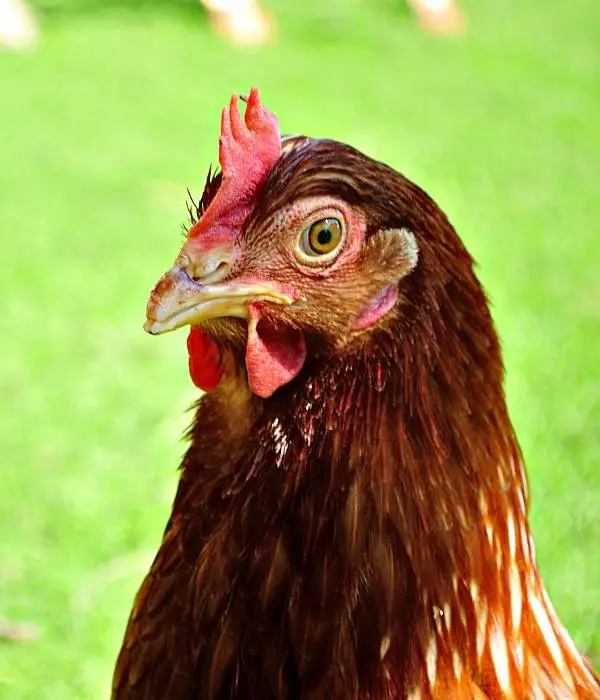
Benefits of Raising Rhode Island Red Chickens
Raising Rhode Island Red chickens brings many perks beyond just eggs and meat — they’re a breed that truly delivers on multiple fronts. Here’s a deeper look:
Dual-Purpose Productivity
One of the most compelling reasons to keep RIRs is how well they balance egg-laying and meat yield. A healthy hen can lay 180–280 light brown eggs per year—about 4 to 6 large eggs weekly—making them one of the top choices for families who want a flock that works for both production and utility. And when it’s time for meat, their sturdy build delivers flavorful cuts without compromising the flock’s laying potential.
Climate Tolerance & Adaptability
Rhode Island Red chickens are hardy by nature. They survive cold winters well thanks to thick plumage, and they’re also adaptable to warmer climates with proper shade and ventilation. Whether your area freezes or bakes, these birds adjust, which adds peace of mind for keepers in varied regions.
Friendly for Beginners
These birds are among the more forgiving breeds for new chicken raisers. The hens are calm, gentle, and easy to handle, making them wonderful for backyard flocks or family farms. Even the roosters, while protective, are manageable with early socialization and a stable routine.
Low Broodiness, Easier Egg Collection
Many RIR hens rarely go broody. That’s an advantage if your priority is consistent egg production rather than natural hatching. It means fewer interruptions in laying and more eggs to collect. When hens do go broody, they often make excellent mothers, so you can choose to hatch chicks or use an incubator based on your goals.
Great Foragers & Yard Helpers
These chickens love to roam and scratch through soil looking for bugs, worms, grasses, and seeds. That behavior helps manage pests in your yard naturally, reduces feed waste, and keeps your flocks mentally stimulated. If you enjoy letting your birds free-range, RIRs thrive in that role.
Striking Appearance & Show Potential
With their rich red plumage, upright posture, and confident walk, Rhode Island Reds are beautiful birds. They look striking in any backyard coop and are often admired in shows and exhibitions. They’re not just utilitarian — they bring aesthetic appeal too.
Care Guide for Rhode Island Red Chickens
To get the most from your RIR flock over many seasons, a thoughtful care plan goes a long way. Here’s a more thorough guide:
Predator Safety & Secure Housing
RIR hens are gentle and can be vulnerable to raids by foxes, raccoons, neighborhood dogs, or even hawks. Use sturdy chicken wire or hardware cloth with no gaps, bury mesh under your run to prevent digging, and consider electrified fencing if predators are common in your area. Provide solid coop housing with locks and sheltered night enclosures to keep your flock safe after dusk.
Space & Coop Design
Rhode Island Reds are larger birds, so they need comfortable room to move. Plan for 3–4 square feet per bird inside the coop and 15–20 square feet in the run. Overcrowding stresses chickens, reduces egg output, and raises disease risk. Provide multiple roosts and nesting boxes so hens aren’t fighting for space.
Nesting & Laying Setup
Offer well-designed nesting boxes (about one box per 3–4 hens), lined with straw or soft bedding, and keep them dim, private, and clean. Because RIR hens lay reliably, the nest boxes should be accessible and comfortable to encourage consistent laying. Check and refresh bedding regularly to maintain hygiene.
Balanced Diet & Feeding Strategy
Provide high-quality layer feed with the correct protein (around 16–18%) and calcium supplements (such as oyster shell) for strong eggshells. Supplement with kitchen scraps, greens, and insects if available to enrich nutrition. Always offer clean, fresh water — consider heated waterers in autumn/winter so they don’t freeze. Monitor feed intake, especially in hot or cold weather, and adjust as needed.
Health & Parasite Checks
Even though Rhode Island Reds are robust, regular health checks matter. Look for signs of mites, lice, or respiratory issues. Give them dust baths to help them control parasites naturally. Observe skin, comb color, feather condition, and clarity of eyes. Keep vaccinations and treatments up to date, and isolate any bird that shows signs of illness until resolved.
Climate & Weather Management
While they’re cold-hardy, RIRs still need protection in extreme weather. In winter, reduce drafts, supply dry bedding, and ensure ventilation without chilling. In summer, provide shade, ventilation, and cool water to prevent heat stress. A good coop with airflow, shade cloth, and insulation helps your birds stay comfortable year-round.
Breeding & Egg Hatching
Because most RIR hens don’t go broody, using an incubator is often more reliable if you intend to hatch chicks. However, when hens do sit on eggs, they make attentive mothers. Monitor for even incubation, rotate eggs, and help chicks during hatching delays. Once hatched, give chicks gradual access to feed, water, and shelter.
Routine Observation & Record-Keeping
Track your flock’s performance: egg counts, weights, hatch success, feed consumption, and any health issues. Daily observation helps you spot behavior changes, lethargy, or signs of stress early. Make notes so you can spot trends and adjust your management. These routines will help you maximize the Rhode Island Red chicken lifespan and productivity.
Socialization & Handling
From a young age, gently handle hens and roosters to build trust. This practice reduces stress during coop cleaning, health checks, or moving the birds. Friendly birds are easier to manage and more pleasant to keep, especially if you want your Rhode Island Reds to be both productive and companionable.
Common FAQs
How long do Rhode Island Red chickens live?
With good care, a Rhode Island Red chicken will usually live 5–8 years, which is about average for a heavy-laying breed. However, some heritage strains can go well past that — up to 9 or even 10 years — if you protect them from predators and keep their diet balanced. Because these birds stay hardy for a long time, you can enjoy several productive seasons before they slow down.
How many eggs do Rhode Island Red chickens lay?
A healthy Rhode Island Red hen can easily give you 200–300 light-brown eggs per year, which works out to roughly four to six eggs a week. Heritage lines may lay a little less, but they’re still among the most dependable layers you can keep. In addition, their eggs are large and sturdy, making them a favorite for both families and small farms.
How long do Rhode Island Red chickens lay eggs?
You can expect three to four years of strong production before the numbers taper off, although hens may continue to lay the occasional egg after that. Because good feed, shade, and low stress extend the laying period, you’ll want to plan your flock’s diet and housing carefully. This predictable cycle makes it easier for you to decide when to add new pullets or hatch chicks.
Are Rhode Island Red chickens friendly?
Yes — especially the hens. They’re calm, curious, and easy to handle, so beginners often start with them. Roosters can be a bit protective, but with steady handling and space they usually settle in as natural guardians for the flock. That’s why so many people searching for “are Rhode Island Red chickens friendly?” end up choosing this breed for their backyard.
What do Rhode Island Red chickens eat?
Feed your birds a balanced layer ration with 16–18% protein plus a calcium source such as oyster shell. Because they love to forage for bugs, greens, and seeds, safe access to a yard adds variety and cuts feed costs. Fresh water every day is essential, especially during hot weather. This combination of feed and foraging is what supports their strong Rhode Island Red chicken egg production.
How big do Rhode Island Red chickens get?
An adult Rhode Island Red rooster averages about 8.5 pounds, while hens hover around 6.5 pounds, which places them among the heavier dual-purpose breeds. Bantam versions exist too but keep the same shape in a smaller body. Knowing “how big Rhode Island Red chickens get” helps you plan enough coop and run space so everyone stays comfortable and productive.
How much does a Rhode Island Red chicken cost?
Day-old chicks are very affordable: pullets often cost around $5 each, while cockerels are about $3 from most hatcheries. Started pullets or proven layers cost more because they’re close to giving you eggs right away. Prices can also rise for exhibition lines or rarer heritage strains, but for a backyard flock you can start inexpensively.
Summary
Rhode Island Reds are one of the most friendly chicken breeds. They are also on the list of chickens that can be used for eggs and meat.
They have several fantastic advantages, such as a year-round ability to lay eggs and a tolerance for all climates.
Furthermore, RIRs are very docile chickens, so anyone who wants to start raising chickens of this breed can be a suitable option. If you are looking for a chicken breed with many benefits, this is one of the best.
Compared to other chicken breeds, they have good health and are not prone to diseases. I hope you enjoyed this informative article on Rhode Island Red chickens, which helped you decide whether this breed is for you.
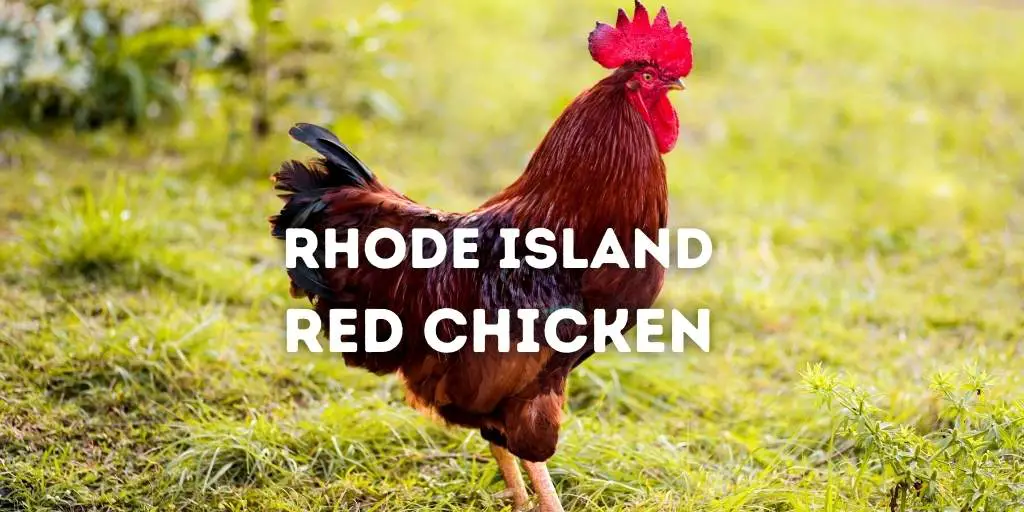
How can I obtain these in Uganda,East Africa
Hi great information
I would like to know about this breed and also blackaurstra breed and if I want to start Farm from were will I get pure breed if any breeding Farm are there can you please share details and contact person name and no
Thanks and regards
Sanjay shringarpure
Thank you
Sir , I want approx 500 hen , but I am not able search pure rir .I also want to attend or work in a workshop .so plz guide me
You will get original breed in most of the major cities, in your countries.
Sir, I want to need (2000 )two thousand RIR chicks
Hello, I wanted to add this to our reference list, however, iti does not have the author’s name in it. Would it be possible to know who authored this? Thank you so much.
Thanks for writing here. You can put Bijaya Kumar (B. Pharma) and a link back to this page